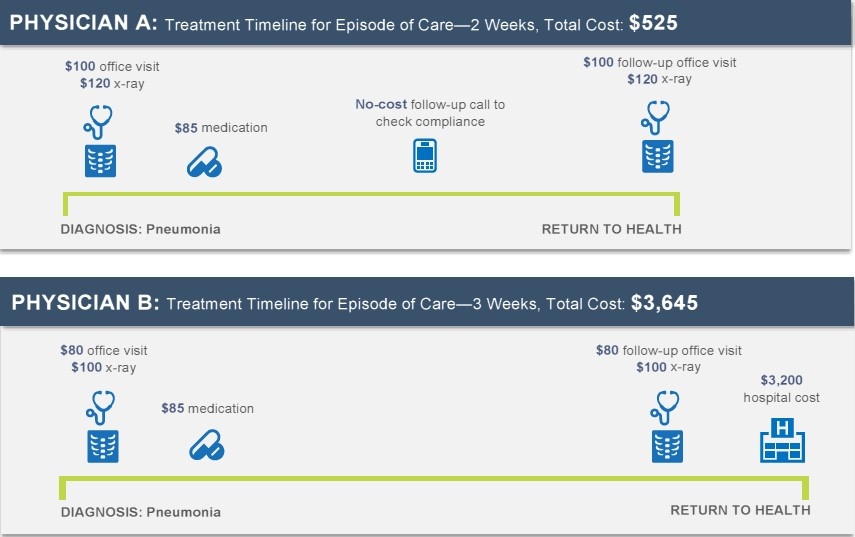Not all medical care is the same. Are your employees getting the most appropriate care available, to achieve the best possible outcomes?
Employers often find it challenging to create ways for employees to bring their best selves to work every day. Research has shown that wellness is not just the physical health of an employee, but much more. Financial health, personal health, and emotional health are all important aspects of overall employee wellness. I have heard from many HR professionals that issues involving health care can be one of the top reasons for employee stress and dissatisfaction. I want to introduce you to a different way of thinking called Episodes of Care that may turn the tables on how health care affects employee wellness.
The concept of episodes of care isn’t new, but I’ve discovered that it is rarely talked about. This approach can bend health care trends, as well as drastically improve employees' and dependents' satisfaction.
If you'd like to learn more about episodes of care and getting the best medical outcomes, register for our webinar: An Introduction to Health Care Data Analytics.
Let me first explain episodes of care, then I'll break down its different parts to show how this concept is utilized.
An episode of care follows a single patient from the start of a condition all the way through completion or return to health. With episodes of care, these questions are asked: What happened? What happened to others? Why did it happen? Should it have happened? Did the right thing happen? Episodes of care also looks at things like timing and appropriateness of care and sequence of care to get to the best possible outcome for the patient.
Timing and Appropriateness of Care refers to the physician using the correct diagnostics at the right time to reach a diagnosis. Is the treatment appropriate for the diagnosis?
Sequence of Care is the physician's game plan when a patient explains their symptoms. Our example below shows pneumonia-like symptoms. What is the physician going to order as far as diagnostics, such as an x-ray, or what medication will be prescribed and in what order?
 Diagram from Gerald W. Frye Presentation: The Limitations of Transactional Data
Diagram from Gerald W. Frye Presentation: The Limitations of Transactional Data
As you can see in the example, the office visit co-pay for Physician A is $20 more than Physician B. Physician A followed the same treatment pattern as Physician B, except Physician A has a team of nurses that make follow-up calls to their patients to see how they are doing and make sure they are taking the prescribed medication. Physician B does not.
We can plainly see that the condition became more complicated in the Physician B example and the patient required a hospital stay. If the member looked solely at a transparency tool for the cheapest doctor visit, they would have gone to Physician B. However, when looking at the overall episode of care, we would all clearly want to be treated by Physician A, despite the more expensive initial office visit.
Also, the timeline to returning to health was two weeks for Physician A and three weeks for Physician B. Not only did the episode of care cost significantly more for the patient treated by Physician B, but the return to health took a week longer. Can you imagine how that could lead to financial and emotional stress if that patient were your employee? The patient that went to Physician A is feeling great about their outcome and return to health, while the patient that went to Physician B endured a longer road to recovery and a more expensive episode.
The great thing about episodes of care is we can answer these questions for all sorts of diagnoses, not just pneumonia. You can give your employees the outcomes they deserve while saving unnecessary dollars spent on health care.
Your employees will thank you by bringing their best, most productive selves to work every day!
If you'd like to learn more about episodes of care and getting the best medical outcomes, register for our webinar: An Introduction to Health Care Data Analytics.

COMMENTS